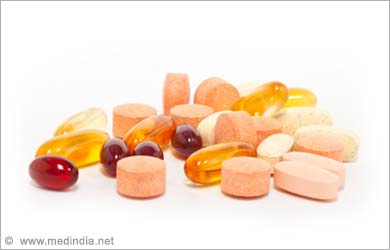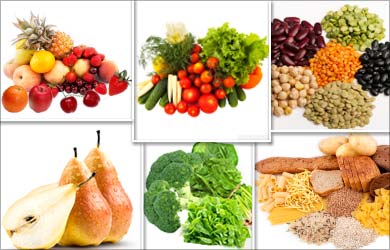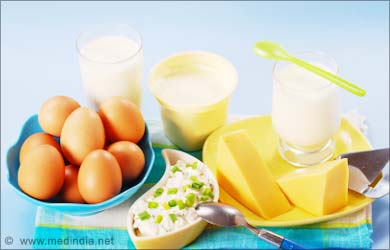Although the exact cause of formation of these pouches is not known, it is attributed to low fiber diet. A low fiber diet over time causes constipation and you have to strain to pass stools. This increases the pressure in the intestines causing these pouches to form. Sometimes small pieces of stool become trapped in these pouches and cause the infection or inflammation (diverticulitis).Symptoms of Diverticulitis

In most cases the disease may not give you any serious problems, but sometimes it does have severe symptoms. It is important to note here that the symptoms are different for diverticulosis and diverticulitis.Diverticulosis:
• Cramping, bloating, and constipation

• Rectal bleeding (bright red colored blood) which may be painless but very dangerous. See a doctor rightaway• Fistula (an abnormal connection between an organ, vessel, or intestine and another structure)
• Inflammation
Diverticulitis:
• Sudden severe pain in the lower left side of the abdomen
• Abdominal pain with fluctuating intensity and getting worse over a period of time

• Cramping, bloating, diarrhea, and constipation• Fever

• Nausea and vomiting 
• Rectal bleeding (less common)Treatment for Diverticulitis
The first line of treatment is going on a liquid diet for a few days to heal the infection. Once the symptoms improve, start on high fiber foods.
If the infection doesn't heal with home care, your doctor will prescribe antibiotics such as metronidazole (Flagyl) plus a quinolone; metronidazole plus trimethoprim-sulfamethoxazole (Bactrim, Septra); or amoxicillinclavulanic acid (Augmentin). It is best to avoid morphine as it may increase pressure within the colon. You should be improving within 48 to 72 hours.

If you don't improve within that time, and your pain increases, or you have fever, or you are unable to tolerate even fluids, you may require hospitalization. Hospitalization is also recommended for people who show significant inflammation, are older than 85 years of age, or are unable to take oral fluids.Sometimes surgery may be required where the surgeon cleans the abdomen and removes bleeding pouches and fistula. If you get diverticulitis a number of times, the part of the colon with diverticula is surgically removed. This process is called resection.
Diet to Prevent Diverticulitis / Best Foods for Diverticulitis
Diet is the most important aspect in the management of diverticulitis.
Unfortunately, once these pouches are formed you will have them for life. But you can prevent diverticulitis by being careful with your diet.
Preventing diverticulitis is easy; the mantra is to exercise regularly, drink lots of water, and eat high fiber foods such as-

• Fruits - apple, peach, pear, berries• Vegetables - broccoli, Brussels sprouts, carrot, squash, spinach, potato, beans, legumes
• Whole grains - brown rice, oatmeal, whole wheat bread
Here's the amount of fiber you can get from these foods-
• A cup of cooked legumes and beans contain 15g to 17g of fiber.
• A cooked medium sized artichoke will give you 10.3g of fiber.
• A cup of cooked peas will give you about 9g of fiber.
• A cup of boiled broccoli and Brussels sprouts contain 5.1g and 4.1g of fiber respectively.
• Berries contain about 8g of fiber per cup.
• A medium sized pear gives about 5.5g of fiber.
• Cooked grains too contain 4g to 7g of fiber per cup.

Aim for 20 to 35 grams of fiber each day, according to Mayo Clinic. You can fiber up your meal by adding flaxseed to, say, yogurt, baked goods or oats. A tablespoon of flaxseed contains about 2g of fiber. It is also rich in omega-3 as well. Psyllium (Isabgol) is another high fiber food that you can use as a supplement. 
It is a long held belief that nuts, corn, popcorn and seeds increase the risk of complications. But researchers have found no evidence to support this theory. For example, an 18 year follow up study published in the Journal of the American Medical Association (JAMA), showed that 'nut, corn, and popcorn consumption is not associated with an increased risk of incident diverticulitis or diverticular bleeding and may be protective for the former'. The researchers suggested that 'the recommendation to avoid these foods in diverticular disease should be reconsidered'.Drink at least 8 cups of fluids daily, preferably water. This will help soften your stool.

Diet during flare-up of DiverticulitisWhen your diverticulitis flares up, go for clear liquid diet, that is, no solid foods. Even the juice you consume should not have the pulp. Your liquid diet can include broth, clear juice of apple, cranberry and grape. Avoid orange juice.

After you feel better, your doctor will tell you when to start with solid food. Solid food, in the beginning of the therapy, should contain low fiber foods such as cooked and skinless fruits and vegetables. You can also eat cheese, milk, and yogurt, eggs, well cooked tender white meats, and low fiber cereals. 
The symptoms may improve after 2 to 4 days and then you can start with high fiber foods but limit their daily consumption to 5-15g per day. Remember to introduce fiber gradually into your diet to avoid bloating, abdominal discomfort and gas.Resume high fiber foods to their required limits once you no longer have the symptoms.
Make a few simple changes in your lifestyle, and you may not have diverticulitis again.
High Fiber Recipes for Diverticulitis
Spinach and Yellow Split Pea Soup
• Soak 50g of yellow split pea overnight.
• In a pan, sauté onion, green chili, tomato and curry leaves for 2 minutes. Add garlic and ginger and then stir in a pinch of fenugreek seeds, 1 tsp each of cumin and coriander powder, and sauté for a few more minutes.
• Add yellow split peas, 500ml water, 400ml milk, some low fat yogurt (if you want to) and a pinch of turmeric powder and cook for 30-40 minutes till the dal (split pea) is soft. If required you may add water to bring the soup to right consistency.
• Turn off heat and add 100g of roughly chopped spinach and salt to taste. Squeeze lemon juice into the soup and serve in bowls.
Black Beans, Chicken and Rice
• Cook a cup of long grained white rice along with some cumin and chili powder for a minute or so. To it add 2 cups of cooked skinless boneless chicken, half a cup each of bell peppers (red, yellow and green), a quarter cup of chopped onion, 15oz of black beans and 15oz of chicken broth or water.
• Cover and simmer till the rice is done (about 15 to 20 minutes).
• Sprinkle cheese and set it aside till the cheese melts. Sprinkle fresh cilantro or coriander leaves and serve.
No comments:
Post a Comment